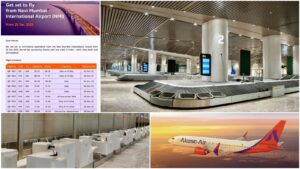Pune-Shirur Highway: Maharashtra Cabinet Clears Major Multi-Lane Upgrade

The Maharashtra cabinet has cleared a major infrastructure boost for the Pune-Shirur Highway, giving the green signal for its multi-lane expansion. The decision came during the infrastructure committee meeting held on Tuesday in Mumbai, chaired by Chief Minister Devendra Fadnavis.
Key Features of the Pune-Shirur Highway Project
The approved Pune-Shirur Highway plan covers a 53.4 km stretch and includes:
- A four-lane road
- A six-lane elevated expressway
- A 7.4 km elevated corridor designed to support both road and metro, in coordination with Maha Metro and MSRDC
The state government aims to complete the Pune-Shirur Highway work within three years. Fadnavis stressed that there should be no delays, especially since the route handles heavy traffic due to several industrial estates along the stretch.
Additional Projects in Chhatrapati Sambhajinagar
Along with the Pune-Shirur Highway upgrade, the committee also cleared two major projects in Chhatrapati Sambhajinagar district:
- A 32.8 km six-lane road from Shendra Industrial Estate to Bidkin Industrial Estate
- A 26 km six-lane highway from Bidkin to Dhoregaon, linking to the Chhatrapati Sambhajinagar-Pune highway
The cabinet also gave in-principle approval for a new greenfield road connecting the Chhatrapati Sambhajinagar-Jalna DMIC Node at Karmad to the Samruddhi Expressway via Bidkin.
Fadnavis directed officials to begin land acquisition quickly for the Shendra-Bidkin and Bidkin-Dhoregaon stretches and to take up urgent repairs on the Chhatrapati Sambhajinagar-Ahilyanagar road.
The meeting was attended by Deputy Chief Ministers Eknath Shinde and Ajit Pawar, Revenue Minister Chandrasekhar Bawankule, Public Works Minister Shivendrasinh Raje Bhosale, and Chief Secretary Rajesh Kumar.
Importance of the Pune-Shirur Highway Upgrade
The Pune-Shirur Highway is a crucial route for daily commuters, industrial traffic, and future metro connectivity. The expansion is expected to reduce congestion, improve travel time, and support long-term economic growth along the corridor.









